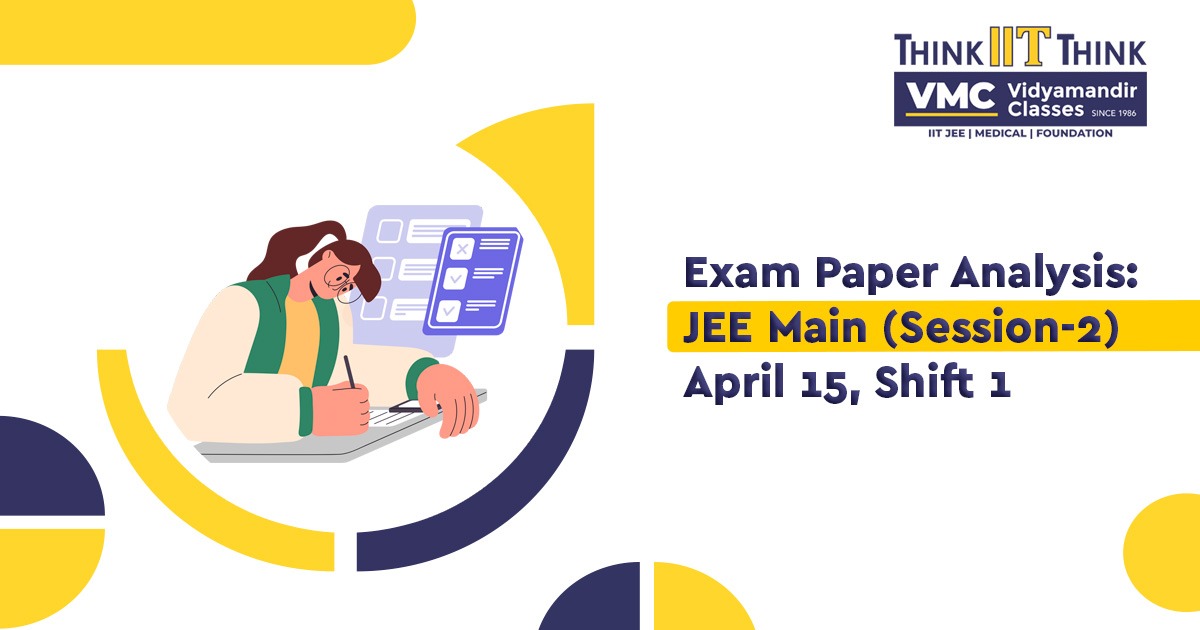Exam Paper Analysis: JEE Main (Session-2) April 15, Shift 1
 Posted On
Posted On
405 total views, 3 views today
The National Testing Agency (NTA) successfully conducted the JEE Main 2023 Exam for Day 7 Shift 1 on April 15, 2023. From 9:00 am to 12:00 noon, the test was given. Students felt that the paper was of a moderate difficulty. Unlike Physics, the mathematics component was challenging.
Exam Analysis for JEE Main Session 2 in 2023: Paper Pattern
Each of the three portions of the paper contained two sections:
- There was a total of 30 questions in Part I of the Physics exam; of those, only 5 had to be answered correctly on the 20 multiple-choice questions in Section I and the 10 numerical questions in Section II. For multiple choice questions, the marking scheme was +4 for the right answer, -1 for the wrong answer, and 0 if the question wasn’t even attempted. For questions with a numerical answer, the marking method was +4 for the right answer and 0 in all other circumstances. There were 100 total marks for this section.
- Chemistry Part II contained a total of 30 questions, of which just 5 had to be attempted. Section I had 20 multiple-choice questions with single correct answers, and Section II had 10 numerical-based questions. For multiple choice questions, the marking scheme was +4 for the right answer, -1 for the wrong answer, and 0 if the question wasn’t even attempted. For questions with a numerical answer, the marking method was +4 for the right answer, -1 for the wrong answer, and 0 in all other circumstances. There were 100 total marks for this section.
- 30 questions made up Part III’s Mathematics section. Twenty multiple-choice questions with a single correct answer were included in Section I, while only five of the ten numerical-based questions in Section II required to be answered. For multiple choice questions, the marking scheme was +4 for the right answer, -1 for the wrong answer, and 0 if the question wasn’t even attempted. For questions with a numerical answer, the marking method was +4 for the right answer, -1 for the wrong answer, and 0 in all other circumstances. There were 100 total marks for this section.
- Nearly all of the CBSE Board’s Class XI and XII chapters were covered by the questions. In terms of chapter covering, the paper was balanced according to the students. Few students thought this Paper was simpler than those from April 2023’s earlier sessions.
The degree of difficulty as reported by students during the morning session of April 15, 2023.
Mathematics:
Moderate level of mathematics. Questions from all chapters were asked, with Calculus & Algebra receiving the most weightage. Nearly all chapters in the calculus—Limits & Continuity, Differentiability, Indefinite & Definite Integrals, Application of Derivative, Area, and Differential Equations—are covered in the questions. The chapters on Algebra covered a variety of topics including Complex Numbers, the Binomial Theorem, Progressions, Matrices & Determinants, Mathematical Reasoning, Statistics, Permutation & Combination, and others. Multiple questions including vectors, three-dimensional geometry, matrices, and probability were asked. Parabola, circles, and ellipses were used in mixed-concept questions. Long calculations were made in the numerical section. Lengthy and tricky questions were not frequently mentioned.
Physics:
Easy level in physics. Chapters from class XII are given more weightage. Kinematics, Gravitation, SHM, Heat & Thermodynamics, Circular & Rotational Motion, EM Waves, Electrostatics (Dipole), Communication Systems, Magnetism, AC Circuits, Current Electricity, Modern Physics, Ray & Wave Optics were among the topics covered. Long yet simple questions were based in numbers.
Chemistry
Easy to Moderate Level Chemistry. Compared to Physical and Organic Chemistry, Inorganic Chemistry was given higher weightage. Physical Chemistry questions with a numerical component generally dealt with solutions, thermodynamics, chemical kinetics, and ionic equilibrium. Additionally, questions about the solid state, ore metallurgy, coordination compounds, titrations, chemistry in daily life, and s&p block were asked.



